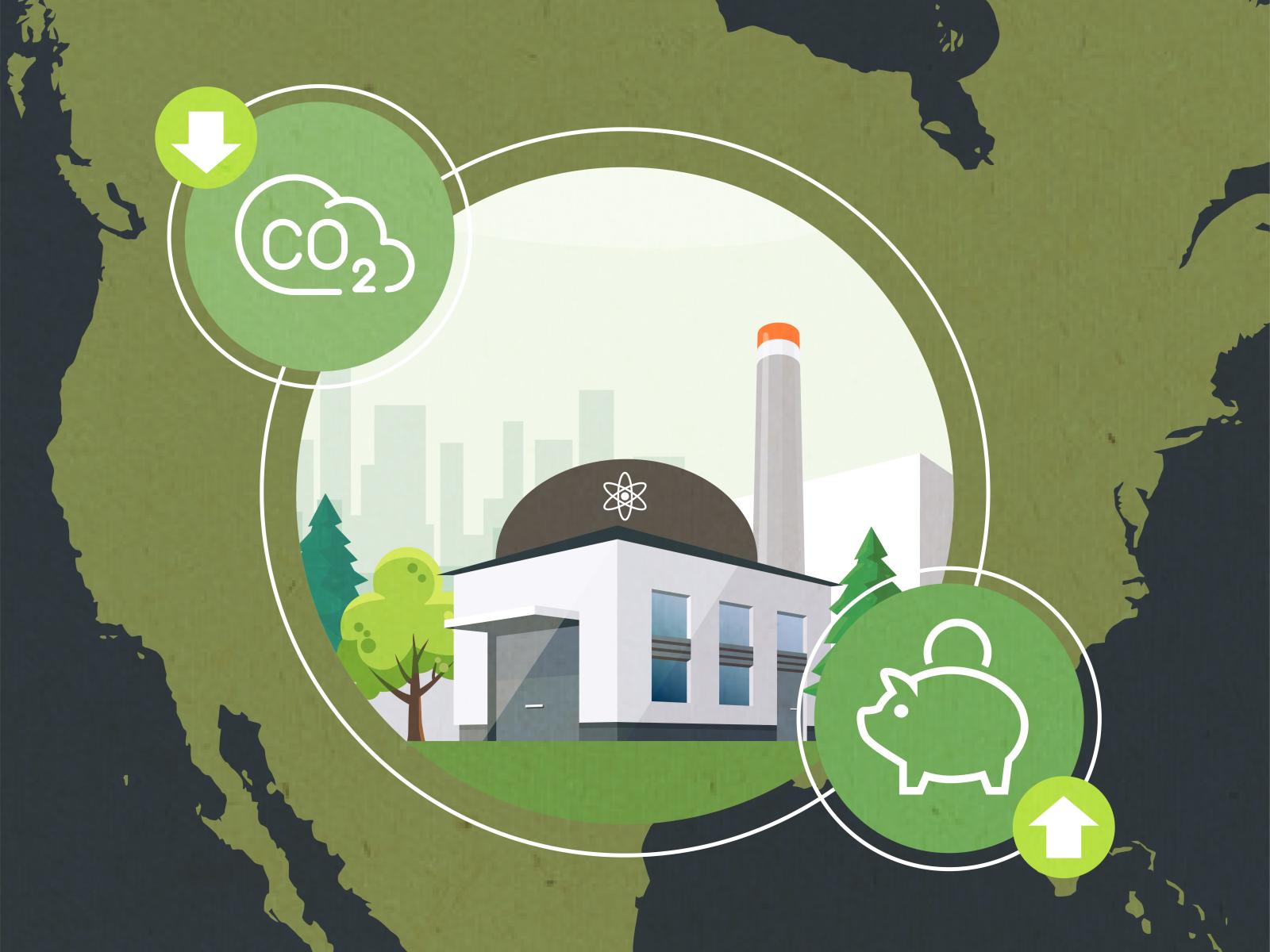Nuclear power is the single largest source of carbon-free energy in the United States and currently provides nearly 20 percent of the nation’s electrical demand. Many analyses have investigated the potential of future nuclear energy contributions in addressing climate change. However, few assess the value of existing nuclear power reactors.
Research led by Pacific Northwest National Laboratory (PNNL) Earth scientist Son H. Kim with the Joint Global Change Research Institute (JGCRI), a partnership between PNNL and the University of Maryland, has added insight to the scarce literature and is the first to evaluate nuclear energy for meeting deep decarbonization goals. Kim sought to answer the question: Just how much do our existing nuclear reactors contribute to the mission of meeting the country’s climate goals, both now and if their operating licenses were extended?
As the world races to discover solutions for reaching net zero, Kim’s report quantifies the economic value of bringing the existing nuclear fleet into the year 2100 and outlines its significant contributions in limiting global warming.
Plants slated to close by 2050 could be among the most important players in a challenge that requires all carbon-free technology solutions that are available—emerging and existing—the report finds. New nuclear technology also has a part to play, and its contributions could be boosted by driving down construction costs.
“Even modest reductions in capital costs could bring big climate benefits,” said Kim. “Significant effort has been incorporated into the design of advanced reactors to reduce the use of all materials in general, such as concrete and steel, because that directly translates into reduced costs and carbon emissions.”
Nuclear power reactors face an uncertain future
The nuclear power fleet in the United States consists of 93 operating reactors across 28 states. Most of these plants were constructed and deployed between 1970-1990. This means half of the fleet has outlived its original operating license lifetime of 40 years. While most reactors have had their licenses renewed for an additional 20 years, and some for yet another 20, the total number of reactors that will receive a lifetime extension to operate a full 80 years from deployment is uncertain.
Other countries also rely on nuclear energy. In France, for example, nuclear energy provides 70 percent of the country’s power supply. They and other countries will also have to consider whether to extend the lifetime, retire, or build new, modern reactors. However, the U.S. faces the potential retirement of a bulk of reactors in a short period of time—this could have a far stronger impact than the staggered closures other countries may experience.
“Our existing nuclear power plants are aging and with their current 60-year lifetimes, nearly all of them will be gone by 2050. It’s ironic. We have a net zero goal to reach by 2050, yet our single largest source of carbon-free electricity is at risk of closure,“ said Kim.
Exploring scenarios of lifetime extensions for nuclear power reactors
###
About PNNL
Pacific Northwest National Laboratory draws on its distinguishing strengths in chemistry, Earth sciences, biology and data science to advance scientific knowledge and address challenges in sustainable energy and national security. Founded in 1965, PNNL is operated by Battelle for the Department of Energy’s Office of Science, which is the single largest supporter of basic research in the physical sciences in the United States. DOE’s Office of Science is working to address some of the most pressing challenges of our time. For more information, visit https://energy.gov/science. For more information on PNNL, visit PNNL’s News Center. Follow us on Twitter, Facebook, LinkedIn and Instagram.
